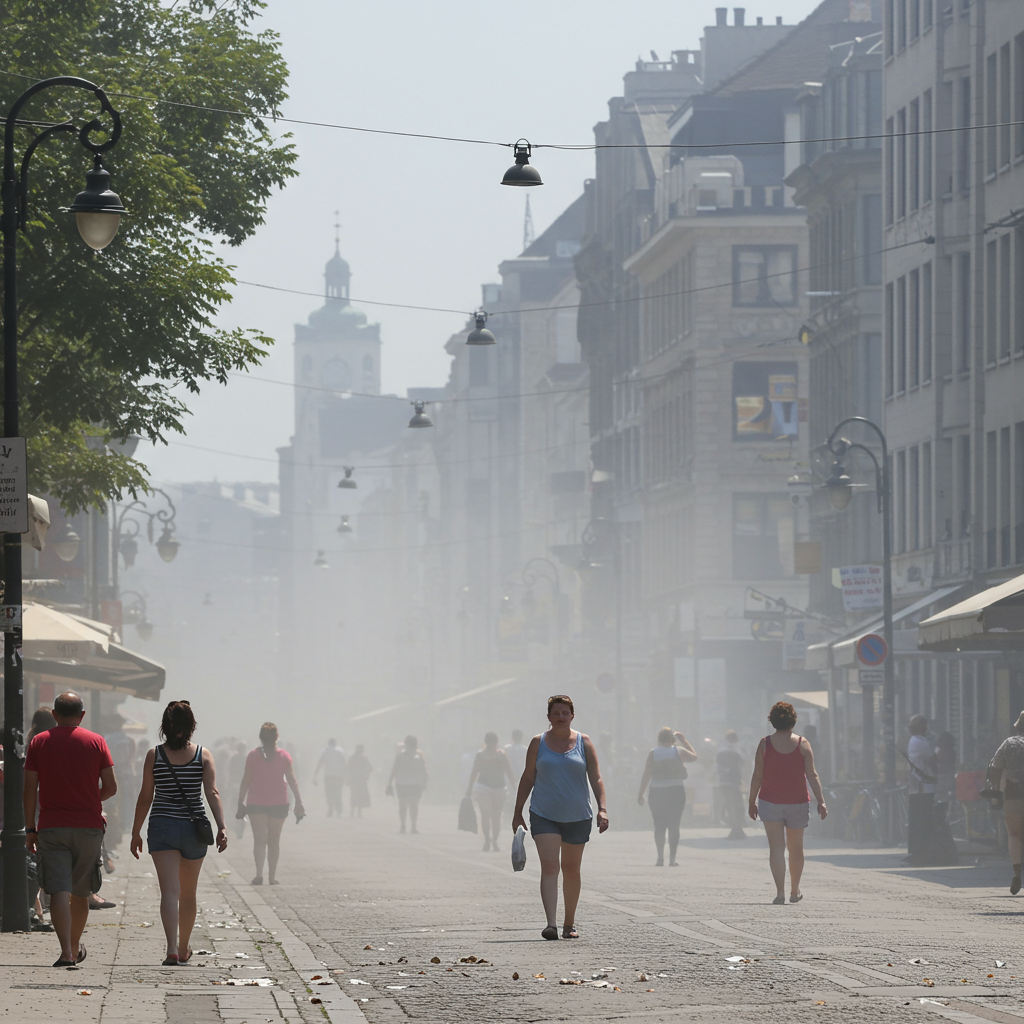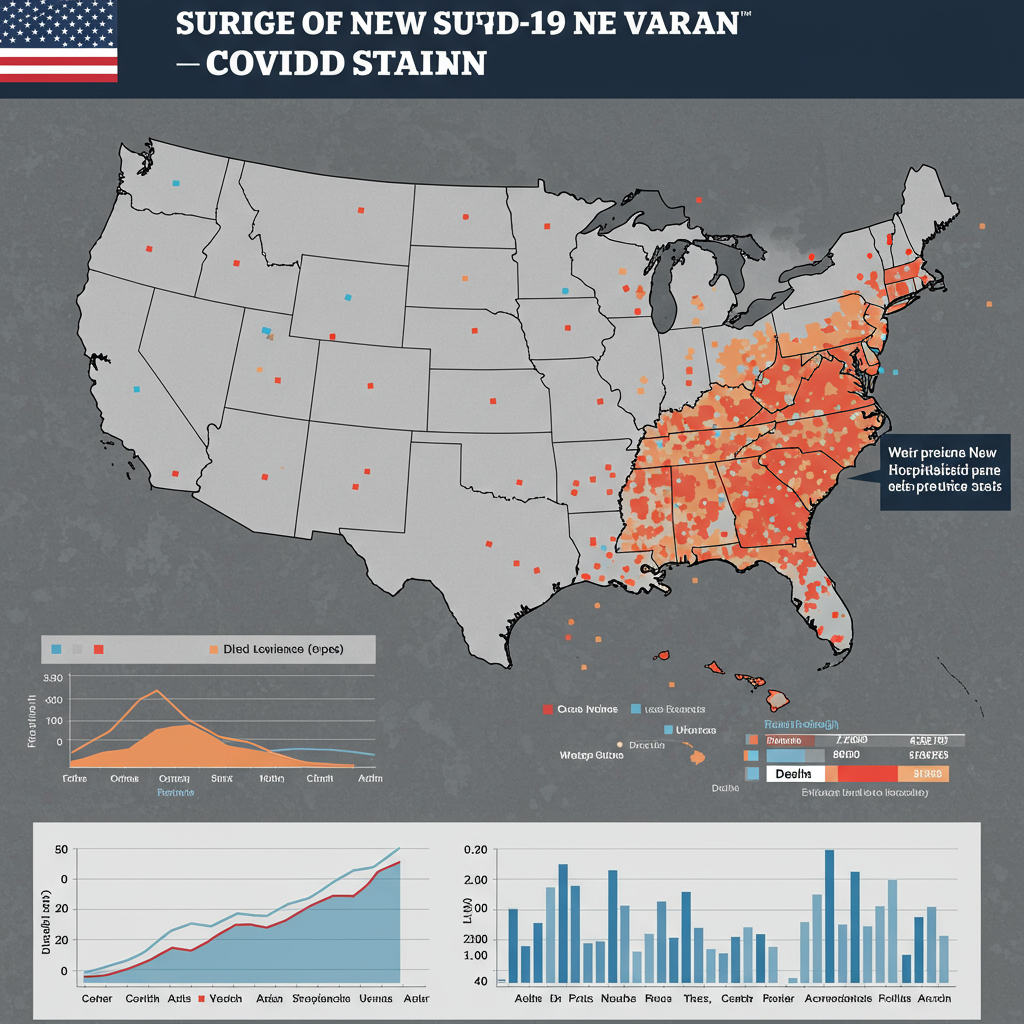Europe is currently sweltering under an intense and widespread heatwave, pushing temperatures to unprecedented levels and shattering long-standing records across the continent. Spain and England have notably registered their hottest Junes ever, a stark indicator of the escalating summer heat gripping millions. This extreme weather phenomenon is far more than just high temperatures; it’s unleashing devastating wildfires, overwhelming healthcare systems, and causing significant disruption to daily life and key infrastructure from major urban centers to vital transport routes. Authorities are issuing urgent warnings, and the situation is reigniting critical discussions around climate change and adaptation strategies.
record Temperatures Shatter Norms Across Europe
The sheer intensity of this heatwave is evident in the temperature records being broken across numerous countries. Spain’s national weather service, Aemet, described June as “extremely hot.” The average temperature for the month hit 23.6C (74.5F), a figure that Aemet states “has pulverised records.” This average temperature actually surpassed the typical norms seen during the usually hotter months of July and August, highlighting the exceptional nature of this early summer heat.
Meanwhile, in England, the Met Office reported that June’s mean temperature reached 16.9C, setting a new record for the month since observations began in 1884. The United Kingdom as a whole also experienced its second warmest June on record, with a mean temperature of 15.2C, only slightly cooler than the 15.8C recorded in June 2023. Specific daily records in the UK also fell. London’s St James’s Park recorded 34.7C, marking the hottest day of the year so far. Heathrow Airport hit 33.1C, and Wimbledon saw a temperature of 32.9C on its opening day, the hottest start to the tennis tournament on record.
Unprecedented Highs in Southern Europe and Beyond
Southern Europe bore the brunt of some of the most extreme temperatures. Mainland Portugal recorded a staggering daily temperature of 46.6C (115.9F) in Mora, east of Lisbon. This figure set a new daily record for June in mainland Portugal, surpassing the previous record of 44.9C from 2017. Spain also saw a June daily high of 46C in El Granado (Huelva province). Across the Iberian Peninsula, several locations topped 43C.
France also experienced historically high temperatures. Many cities recorded their hottest night and day on record for June, with Paris Orly airport reaching 37.6C. In Italy, temperatures soared to 38.9C in Florence and 38.6C in Cagliari. Greece has seen days of temperatures approaching 40C. Germany’s meteorological service warned of temperatures nearing 38C, potentially challenging previous records. The Balkans also struggled, with Serbia registering its highest-ever temperature since record-keeping began in the 19th century. Sarajevo, Bosnia and Herzegovina’s capital, hit a record 38.8C, Slovenia recorded its hottest June temperature, and North Macedonia’s capital, Skopje, reached 42C. Japan also reported its hottest June on record, indicating the global nature of this trend.
Widespread Impacts and Disruptions Fuel Crisis Concerns
The intense heatwave is having severe consequences across multiple sectors, affecting public health, safety, infrastructure, and the environment. The human toll is tragically rising, with at least two heat-related deaths reported in Italy. Authorities in Barcelona are investigating the death of a 51-year-old street sweeper in connection with the high temperatures he worked in. Hospitals in Italy have seen a notable increase in heatstroke cases, particularly among vulnerable groups like the elderly, cancer patients, and homeless individuals, with emergency department admissions rising by 20% in regions like Tuscany.
Wildfires have ignited or intensified across the tinder-dry landscape. In Turkey, relentless fires forced the evacuation of over 50,000 people, primarily from the western province of Izmir. Firefighters battled hundreds of blazes nationwide, affecting areas like Bilecik, Hatay, Sakarya, and Manisa. Greece saw wildfires hit coastal towns near Athens, destroying homes and prompting evacuations. Further fires were reported in Montenegro, Croatia, and France.
Heatwave Strains Infrastructure and Daily Life
Disruption to daily life is widespread. The Eiffel Tower in Paris was closed due to the extreme heat. France’s Climate Minister called the situation “unprecedented.” As many as 1,896 schools and colleges across France were closed in regions under the highest heat warning, affecting nearly 2,000 educational establishments. In Italy, authorities implemented bans on outdoor work during the hottest parts of the day (typically 12:30 to 16:00) on construction sites, roads, and farms until September in Lombardy and similar measures in Sicily and Liguria.
Transportation is also impacted. Low water levels in Germany’s Rhine River, a critical shipping route, are limiting cargo capacity on vessels and driving up freight costs. In cities like Paris, measures included banning polluting traffic and implementing speed restrictions to mitigate the heat island effect and reduce health risks. The heat poses challenges even in sport, highlighted by the record temperatures at Wimbledon.
The economic and social strain is also becoming apparent, particularly in countries like Germany. Industry groups note that essential facilities like schools, elderly care homes, and hospitals are often ill-equipped to handle prolonged extreme heat due to a lack of investment in air conditioning. Social welfare advocates are calling for better training for caregivers, and teachers’ unions have requested immediate measures to protect students, such as limiting sun exposure and providing free water. The heatwave is impacting the German economy through rising heat-related sick days, which surged by 12% between 2018 and 2023. There’s a growing debate about establishing a legal right for employees to take time off during extreme heat. Compounding the issue, low rainfall has exacerbated drought conditions, stressing forests already damaged by previous dry spells.
Coping Strategies and Alerts Activated
European countries are implementing various strategies to help citizens cope with the unprecedented heat. France placed a record 84 out of 96 mainland departments under an orange alert (the second highest level), while the Paris region and 15 other French regions activated a red alert, the highest extreme heat warning. In the UK, the Health Security Agency (UKHSA) extended an amber heat health alert covering much of England, including London, the South East, and the Midlands, warning of significant impacts on health and social care services. A yellow alert remained in place for the North West.
Cities are also taking specific measures. Bologna, Italy, established seven climate shelters offering air conditioning and drinking water. Rome is providing free access to city swimming pools for residents over 70, and Venice is offering free guided tours of air-conditioned museums for those over 75. In the Netherlands, some schools adopted “tropical schedules” with shorter hours and more water breaks. Austria set up 23 “climate oases” with cooling facilities. French cities like Orleans and Marseille offered free access to museums and public pools.
Public health advice remains critical: stay indoors during the hottest hours, hydrate frequently, and check on vulnerable neighbors and relatives. Authorities urge people to avoid strenuous outdoor activities. While parts of Spain expected a slight respite in temperatures, the heat was forecast to continue rising and move eastward across other parts of Europe, including the UK, before cooler air arrives later in the week for some regions.
The Indisputable Climate Change Connection
Scientists and experts are unequivocally linking the increasing frequency and intensity of such heatwaves to human-caused climate change. The UN’s Intergovernmental Panel on Climate Change (IPCC) has repeatedly stated that extreme hot weather events will become more common and more intense as the planet warms due to greenhouse gas emissions from burning fossil fuels.
Professor Richard Allan, a Climate Science expert at the University of Reading, explained that rising levels of greenhouse gases trap excess heat, making it harder for the Earth to cool down. He noted that a “warmer, thirstier atmosphere is more effective at drying soils,” which in turn intensifies heatwaves, transforming moderate heat events into extreme ones.
The environmental impacts are already visible. Higher temperatures in the Adriatic Sea are favoring the spread of invasive species, such as the venomous lionfish. The heat is also putting further stress on Alpine glaciers, which are already shrinking at alarming rates. Drought conditions are being exacerbated in regions with low rainfall.
The UN’s human rights chief, Volker Turk, highlighted that the heatwave underscores the urgent need for climate adaptation. He warned that rising temperatures, sea levels, floods, droughts, and wildfires directly threaten fundamental human rights, including the rights to life, health, and a clean environment. Clare Nullis, a spokesperson for the World Meteorological Organization (WMO), called extreme heat the “silent killer,” emphasizing that heat deaths are preventable with existing knowledge and tools. While July is typically the hottest month, heat episodes of this intensity so early in the summer are considered exceptional.
Frequently Asked Questions
What specific temperature records were broken during the recent European heatwave?
Several significant temperature records were set. Spain recorded its hottest June on record with an average temperature of 23.6C. England also had its hottest June on record with a mean temperature of 16.9C. Mainland Portugal set a new daily high for June at 46.6C in Mora. Spain also recorded its highest-ever June temperature in El Granado/Huelva at 46C. The UK experienced its second warmest June overall, and Wimbledon had its hottest opening day on record at 32.9C. Many other cities across France, Italy, Germany, and the Balkans also saw near-record or record daily highs.
What measures are different European cities and countries taking to help residents cope with the extreme heat?
European authorities are implementing various strategies. France issued high-level heat alerts, closing nearly 2,000 schools in affected regions. Italy has placed 21 cities on its highest heat alert, banned outdoor work during peak hours in several regions, and cities like Rome, Venice, and Bologna are offering cooling centers or free access to pools/museums for vulnerable populations. The UK Health Security Agency issued amber and yellow heat health alerts. Other measures include shorter school hours in the Netherlands and setting up “climate oases” in Austria.
What are the main risks and public health advice associated with the severe heatwave conditions?
The primary risks include heatstroke, heat exhaustion, and potential heat-related deaths, particularly for vulnerable individuals like the elderly, young children, and those with existing health conditions. The heat also exacerbates wildfire risk. Public health advice includes staying indoors during the hottest parts of the day, drinking plenty of water to stay hydrated, avoiding strenuous activity, wearing light clothing, and checking on vulnerable neighbors and relatives. Following official heat warnings and guidelines from local authorities is crucial.
Conclusion
This intense heatwave across Europe serves as a stark reminder of the escalating impacts of climate change. Record temperatures, devastating wildfires, and strained public services highlight the urgent need for adaptation and continued efforts to address the root causes of warming. As extreme heat events are predicted to become more frequent and intense, understanding the risks and implementing protective measures becomes increasingly vital for communities across the continent. The scale and severity of this event underscore that preparing for and mitigating the effects of a warming world are not distant concerns but immediate imperatives.


